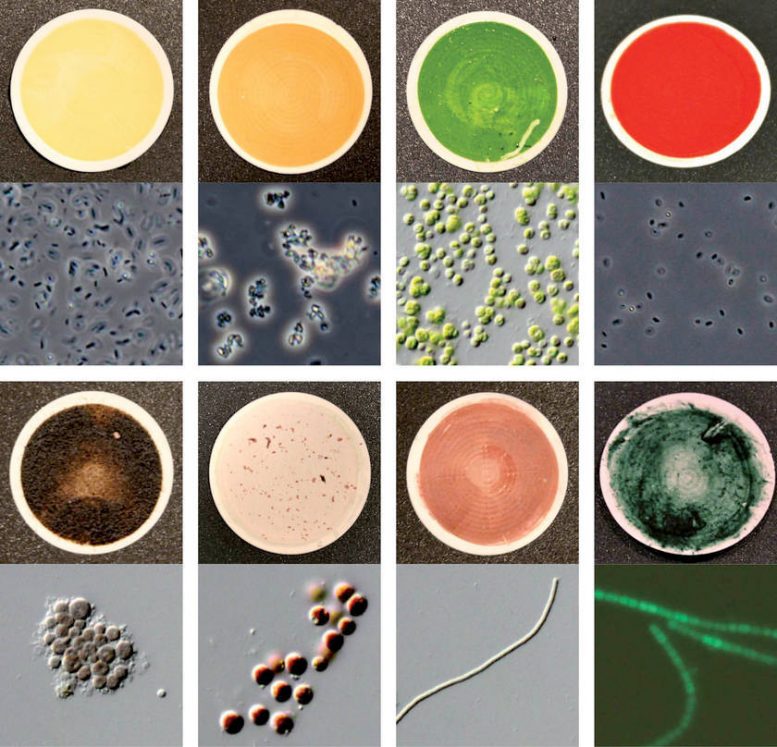
Eight of the 137 microorganism samples used to measure biosignatures for the catalog. In each panel, the top is a regular photograph of the sample and the bottom is a micrograph, a 400x zoomed-in version of the top image. The scientists were aiming to achieve diversity in color and pigmentation. Credit: Hegde et al. / MPIA
A new catalog of reflectance spectra for a diverse range of pigmented microorganisms may help scientists recognize life on the surface of planets orbiting stars beyond our solar system.
A team of astronomers and biologists has recorded the “chemical fingerprints” of 137 different species of microorganism. In the future, this could help to recognize life on the surface of exoplanets — planets orbiting stars beyond our solar system. The microorganisms are native to a wide variety of environments and exhibit a range of pigmentation. The team, led by doctoral student Siddharth Hegde of the Max Planck Institute for Astronomy in Heidelberg, has made the results available in an online database.
Astronomers are gearing up for a new phase of research on exoplanets (planets outside our solar system), teaming up with biologists to formulate search strategies for life on these distant planets. So far, these efforts have focused on what are known as indirect biosignatures, such as by-products of life that could be detectable in a host planet’s atmosphere. But if the surface of an exoplanet were dominated by one particular life form, a more direct form of detection might be possible: a detection based on light reflected by that life form, taking on a characteristic tint in the process.
We observe planets by studying starlight reflected off their atmospheres or surfaces, because the composition of this reflected light provides us with information about what is to be found on the planet. Alien astronomers making detailed observations of Earth would notice a greenish tint as sunlight reflected by trees and other vegetation reaches their telescopes.
Similarly, the presence of an alien organism covering large swathes of an exoplanet’s surface could be measured directly through the imprint left by the organism’s pigmentation, the chemical makeup that determines its color. This imprint is the reflected light’s spectrum: the light split up, rainbow-light, into component colors. It is the chemical analog of a fingerprint, allowing for the identification of different types of microorganism.
Now, a group of astronomers and biologists led by Siddharth Hegde has teamed up to explore what these fingerprints might look like and how diverse they could be. Hegde, then a graduate student at the Max Planck Institute for Astronomy, and astronomer Lisa Kaltenegger (Director of the Institute for Pale Blue Dots at Cornell University) teamed up with biologist Lynn Rothschild, postdoctoral fellow Ivan Paulino-Lima and research associate Ryan Kent, all of the NASA Ames Research Center, to explore the full range of possibilities for what chemical fingerprints – and therefore exoplanet surface biosignatures – could look like.
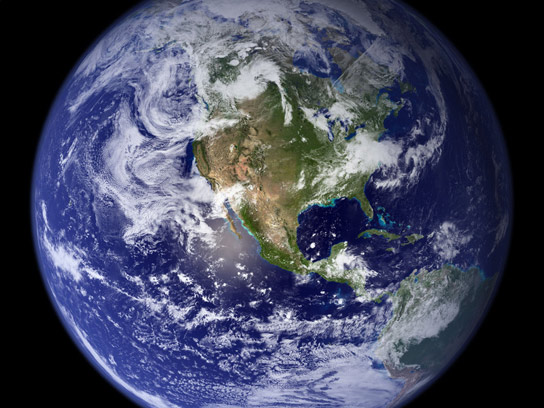
In this composite satellite image from NASA, you can see a greenish tint in the reflected sunlight, a direct signature of plant life present on Earth’s surface. Similarly, if microbial life with a particular pigmentation covered large swathes of an exoplanet’s surface, its presence could in principle be measured directly through its tint in reflected starlight viewed through our telescopes. Credit: NASA Earth Observatory
To this end, the team assembled cultures of 137 different species of microorganism. A primary concern in selecting species was the diversity of pigmentation: the 137 life forms span a variety of colors and are residents of a variety of environments, ranging from the Atacama Desert in Chile, to seawater in Hawaii, to some old woodwork at Salt Spring in Boone’s Lick State Park, Missouri.
The team reflected light off samples from each microorganism culture, measured their chemical fingerprints, and assembled their findings in an online catalog. This biosignature catalog (which consists of reflectance spectra in the optical and near-infrared wavelength regions, 0.35-2.5 micrometers) is the most complete and diverse to date, and the first dedicated to surface biosignatures for exoplanets.
For now, the catalog primarily serves to illustrate the potential diversity of extrasolar life. It also illustrates the potential diversity of extrasolar planets, because particular pigments arise out of particular environmental conditions and can thus provide clues regarding the nature of the planet.
In addition, because the surface of a planet affects its atmosphere, these biosignatures could be used as initial conditions for models of exoplanet atmospheres (called “atmospheric radiative transfer models”). More precisely, the surface composition determines how much radiation is reflected back from the surface and used in chemical processes in the atmosphere.
When the team assembled their catalog, they observed that the fingerprint of a microorganism is primarily determined by its pigmentation makeup. This makeup is a result of secondary metabolic processes, which are unique to life forms and play important roles in photosynthesis, in screening harmful ultraviolet radiation, and in preventing oxidative damage. Thus, recognizing a particular pigmentation makeup through a biosignature corresponds to recognizing a type of living being.
The team has plans to collect more samples and add more fingerprints to the catalog, in order to further enhance the diversity of the microorganisms represented. They hope that it will be helpful not only to astrobiologists, but also to astronomers who are trying to make models of planetary atmospheres. However, even with the next generation of telescopes, detecting the fingerprints of organisms living on planetary surfaces will be technically highly challenging.
At the moment, it is not possible to directly measure light from an Earth-sized planet, because this light is drowned out by the much brighter neighboring starlight. For now, Kaltenegger says, “This (database) gives us for the first time a glimpse into the detectable signatures of the fascinating diversity of worlds that could exist out there.”
Reference: “Surface biosignatures of exo-Earths: Remote detection of extraterrestrial life” by Siddharth Hegde, Ivan G. Paulino-Lima, Ryan Kent, Lisa Kaltenegger and Lynn Rothschild, 16 March 2015, PNAS.
DOI: 10.1073/pnas.1421237112

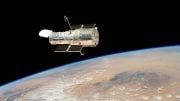
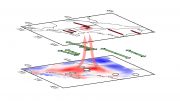
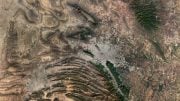
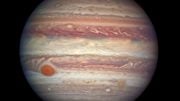

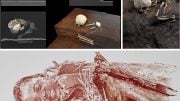

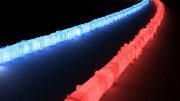
Okay, so maybe the conditions are just right on a particular planet, maybe it’s even in the Goldilocks Zone.
Though, again, what is this mystery called ‘life’, and does it merely need the right conditions to just ‘magically’ appear, if the ‘organic soup’ there is just so so?
I believe that this is too far fetched, and that this mystery of life is extremely rare, as in non-existent, anywhere else in this universe.
I know that the Drake equation says differently, from its ‘statistical’ point of view. Though, it does not play well with the FERMI paradox. It doesn’t even begin to come close to DEFINING what life is in the first place.
I believe this all points to living in a vast 3D hologram, projected through a 2D surface, which encompasses the entire universe. And, it’s focused-in upon this pale blue dot.
One other thing about this ‘focusness’. Look at where we are located in the Milky Way. It appears once again to be at the precise Golden Ratio proportion of 1.618.
There is only one being involved here. And, that one being is none other than, ‘consciousness of being’. Just as in a dream, it appears as if there are many others, yet there is only the observer.
Look at all of the planetary motions that need to happen precisely to sustain this spark of life here. If Jupiter was any closer, its gravitational pull would tear us apart. Any farther away than where it is, and it wouldn’t be taking the ‘hit’ for us, sweeping the inner area clean of asteroids.
Has this pattern ever been seen around other star systems, with planets in the ‘Goldilocks Zone’? No. It hasn’t.
Look at the mystery of the size and distance of the Moon, which precisely covers the sun in an eclipse, or that Venus is at the precise Golden section distance of 8 rotations to our 5 around the Sun.
Many other obvious precision things have to be in place for life to even have a chance here. Tectonic plate sublimation, for one. Where else is that occurring in our solar system? To date, Earth has been the only planet in the Solar System known to demonstrate tectonic activity
Sure, there are many planets around other stars that show promise, yet none of them have shown the same planetary arrangement seen here that is needed to support life.
Here in our solar system, still zero spectrographic evidence of any life, as is seen about Earth from a distance.
It all points to one thing, that this mystery of life is unique to Earth alone.
And, more importantly, to maybe start giving more credence to the possibility that we are living in a vast, elaborate hologram, in which there is only one being involved.